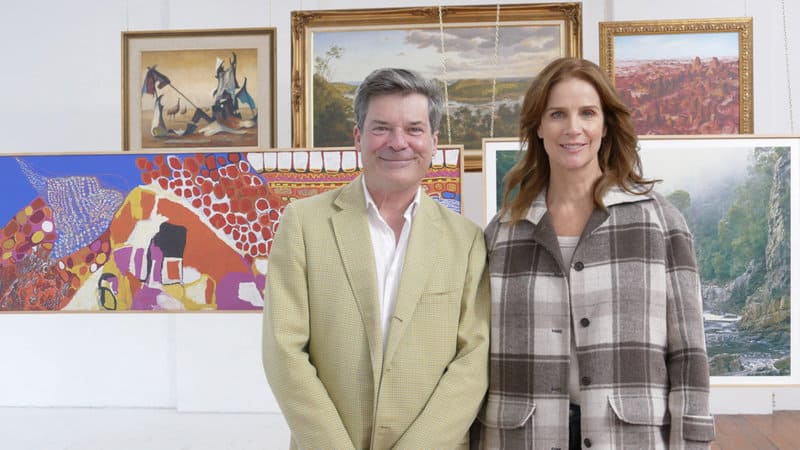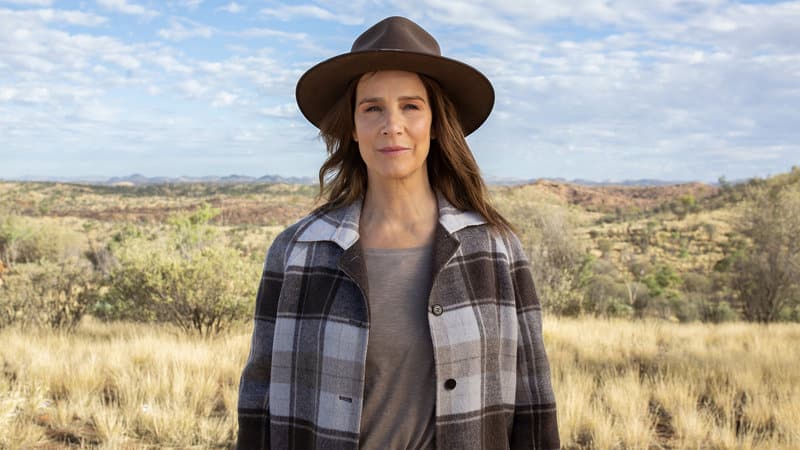After taking a look behind the country’s best portraits in last year’s Finding the Archibald, Rachel Griffiths will be back on Australian screens in Great Southern Landscapes premiering Tuesday, 9 August at 8.00pm on ABC TV and ABC iview.
Mediaweek spoke to host Rachel Griffiths about diving into landscape paintings and what makes Australian art unique.
With Finding the Archibald wrapping up in 2021, Griffiths says the beginnings of the idea for Great Southern Landscapes came from the viewers themselves.
“Very lovely people would approach me on the street or in my DMs and tell me how much they were loving Finding the Archibald. Then they would say what’s next? I would always throw it back to them and say, well, what would you like to see?
“It was amazing how many people said well, I actually did enjoy Finding the Archibald, but I’ve never really been interested in portraiture. I love landscape painting.”
After the seed of the idea was planted, it was being unable to reach the landscapes in person that Griffiths says set the wheels in motion.
“There was one day during our sixth fucking lockdown in Melbourne last year, and I was in my office looking at this beautiful little painting. I remember having the thought: ‘I wish I could just go into that painting and just be there’ – because at the time we couldn’t pack the car and go out and have a picnic or leave our 5km zone. Then I thought, Oh, that’s a cute idea!”

Delving into the history of works by artists from Eugene von Guerard, Albert Namatjira, and Clarice Beckett just to name a few, Griffiths says that choosing which paintings to feature was an important consideration.
“There were paintings in the Gulf of Carpentaria and the Kimberly by living female, First Nations artists that we would love to have done. At the time, we didn’t think we either could or necessarily should be taking a city-based film crew into remote communities. So there were a whole bunch of parameters on that.
“Another parameter was that we really did want to leave Sydney. Finding the Archibald had been very Sydney-centric, and we thought this was an opportunity to go regional.”
On top of where the team could physically travel to, the history of art – and which artists make it to the top of the pile – was something the team had to work around.
“We wanted to launch the show with mostly very iconic and recognisable artists and works – and sadly, that means mostly men,” says Griffiths.
“We made a real decision with the cityscapes. Clarice Beckett died and has been anonymous to Australians for most of the last 100 years. So we decided on Beckett to do the cityscape.”
With so many artists left to uncover, there is a perk about only scratching the surface.
“I reckon we could do 20 seasons of Great Southern Landscapes!”

Rachel Griffiths and Chris McAuliffe
With some of the paintings that the team explores dating back hundreds of years, the fact that most of the views are still so recognisable today may come as a surprise. Griffiths says that the fact that so many iconic landscapes can still be seen today can partially be attributed to the images of them that people love.
“An iconic painting can protect the view. People will say ‘you can’t build on that plain, that’s Streeton’s Lookout. Look at this painting, this is what it’s meant to look like’.
“The Franklin River photograph, which comes up in the wilderness episode, that saved the Franklin. The reason you can go and still stand in that place and see that view of the Franklin River is because the photograph told everybody why that place should be protected.”
Whilst Australian art is not a monolith, Griffiths says that much of it comes from non-Indigenous people trying to make sense of their new home.
“We haven’t been here very long as new Australians. We’re trying to understand the place we live now through a First Nations perspective of caring for country, and a very different attitude to resources.”
More recently in the history of Australia, Griffiths says the multiculturalism we pride ourselves on creates a solid base for a unique artistic landscape.
“We are a country of migrants, so we’re continually re-making our view of this place and its mythology through newer experiences – whether they be African diaspora, Vietnamese diaspora, or Chinese who have been here since the gold rush.
“All you have to do is read the 2022 census to go, ‘oh, this is who we are!’ – I find that really exciting. It’s not about painting through the lens of identity politics, it’s about painting through the lens of the fantastic diversity of experience and perspectives that Australia has, which I think is a superpower.”
